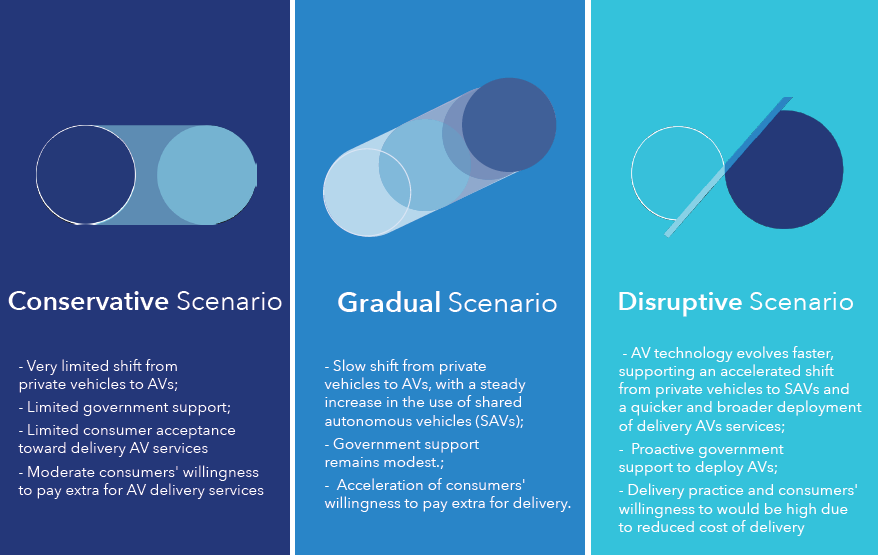The use of Autonomous Vehicles (AVs) has the potential to enhance the convenience and efficiency of last-mile delivery. Delivery AVs can provide an effective solution to carry goods from local stores and restaurants through an on-demand, last-mile delivery service. The use of electric delivery AVs also has the potential to reduce congestion, collisions and transport emissions.
In this context, Nuro has commissioned Steer to conduct an independent study to evaluate the potential economic impacts and wider benefits of introducing delivery AV services in the US.
How we helped
Steer’s New Mobility team considered the following elements:
- Role of delivery AVs in reducing personal vehicle trips for delivery AV services between 2025 and 2035 (US, California and Texas);
- Economic impacts of delivery AV services for the US economy; and
- Wider impacts of delivery AV services at a national level and for California and Texas.
The study considers the period 2025 to 2035 for three potential future scenarios examining a range of potential factors likely to affect the demand for and supply of delivery AV services:

Successes and outcomes
By analyzing the trends in Vehicle miles travelled (VMT) by private vehicles for shopping and errand trips across the US, the study evaluates the proportion of VMT that could be replaced by delivery AV services.
This study estimates that under the middle Gradual Shift scenario, about 23% of in-scope VMT (i.e. 191 billion VMT for shopping and errand trips) could be replaced by delivery AV services by 2035. We estimate that this will generate a potential US demand for delivery AVs of 3.1 million vehicles by 2035.
The next stage of the study considered the economic impacts, including employment impacts and wider benefits, including safety, emissions, and time savings.
Direct Economic Impacts (2025-2035 – Gradual Shift scenario):
- The delivery AV services sector is expected to make a total investment of $1.1 trillion by 2035
- Total Economic Activity worth $3.4 trillion could be potentially generated in the US economy across different sectors (retail, automobile manufacturing, warehousing and storage, etc.)
- 60% ($2.0 trillion) is expected to consist of additional Value Add to GDP
- ~34 million job-years generated between 2025 and 2035
Wider Benefits (2025-2035 – Gradual Shift scenario):
- 244,000 injury-causing road crashes could be avoided; equivalent to the number of such incidents in Texas during the entire 2019;
- More than 21 billion hours of driving trips for shopping and errand purposes could be saved, which represents ~87 hours or as much as 11 vacation day per year per person using the service; and
- A reduction in CO2 emissions of 407 million short tons which is the annual equivalent of 88 million passenger vehicles off the road for one year.





